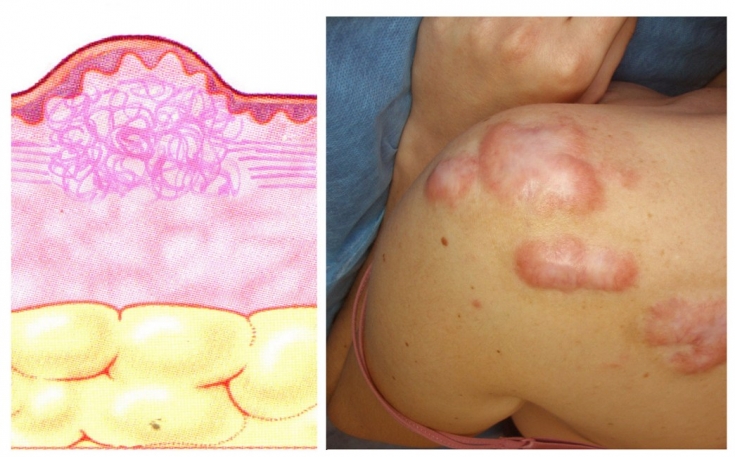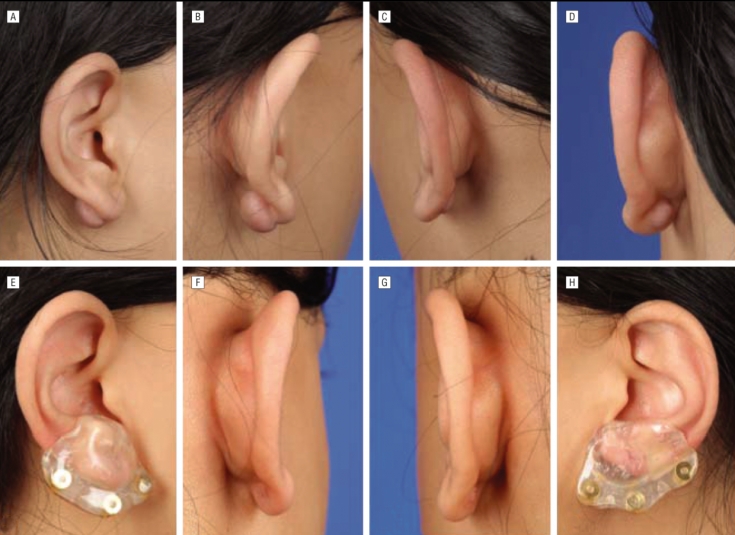Keloid scars are caused by an overgrowth of scar tissue. As a rule, the keloid scar is larger than the damage, and differs in color from the surrounding tissues. These scars are more of an aesthetic problem, especially if they are localized in open areas of the body. To eliminate the keloid scar, it is not enough to carry out its surgical excision. This pathology is characterized by frequent relapses, and therefore requires the use of additional methods of treatment in the form of hormonal or radiotherapy. Read about the main approaches to the treatment of keloid scars on estet-portal.com in this article.
Effective treatments for keloid scars
Keloid scars result from a disruption in normal tissue scarring.
There is a high risk of recurrence when surgical excision of a keloid scar.
Modern recommendations for the treatment of keloid scars include not only surgical removal of the formation, but also the mandatory use of adjuvant therapy. Among the methods that reduce the risk of recurrence of keloid scars, the most effective are:
• corticosteroid injections;
• compression therapy;
• radiotherapy;
• cryotherapy.
Removal of a keloid scar without additional therapy is almost a 100% guarantee of its recurrence.
Keloid Scar Treatment:
• approaches to surgical treatment of keloid scars;
• effective drug treatment of keloid scars;
• additional treatments for keloid scars.
Approaches to surgical treatment of keloid scars
Almost all patients who go to the doctor to remove a keloid scar believe that the surgical method of treatment is the most effective. But, despite the radical nature of the surgical intervention, without concomitant therapy, the scar reappears in the same place. According to statistics, keloid scars on the stalk, mature keloid scars, as well as scars that are localized on the earlobe are most favorable for removal. There is a high risk of recurrence in scars that are located in the region of the upper jaw, upper third of the back and middle of the chest. Therefore, removal of keloid scars without adjuvant therapy (corticosteroid injections, intraoperative cryotherapy, compression therapy, or radiotherapy) should be avoided due to the high risk of recurrence.

Effective medical treatment of keloid scars
Medical treatment of keloid scars includes the use of corticosteroids, interferon, and the antimetabolite 5-fluorouracil.
Glucocorticoids can be used both as an adjuvant therapy and as a separate treatment for keloid scars. For non-surgical removal of a keloid scar, high doses of corticosteroids are injected into the area of the pathological formation, while the injection area should be minimal. As an adjuvant treatment, it is necessary to inject glucocorticoids into the area of scar excision immediately after surgery for 2 months. In the future, therapy can be continued up to 6 months.
Interferon is also used as concomitant therapy during the treatment of keloid scars. At the same time, 1.5 million MO / cm are injected into the excision area during the week. In this case, the maximum single dose should not exceed 5 million MO per session. It's necessary, to minimize the risk of interferon-induced flu-like syndrome.
The antimetabolite 5-fluorouracil is a less attractive treatment alternative because it is less effective and more painful.
Additional treatments for keloid scars
Radiotherapy can be used as a concomitant therapy for keloid scars. This method is not popular among patients, although it is one of the most effective.
X-ray exposure can inhibit fibroblast proliferation, which leads to a decrease in collagen synthesis.
Compression therapy is also used to treat keloid scars. Under the action of pressure in the tissues, hypoxia occurs, which helps to reduce the activity of fibroblasts, and also has an inhibitory effect on angiogenesis.

There is not enough evidence to support the use of laser for the treatment of keloid scars. However, studies show that under the influence of laser irradiation, the induction of capillary destruction occurs. This leads to hypoxemia and, in turn, contributes to a decrease in local collagen production. Thus, we can conclude that for the effective treatment of keloid scars, it is necessary to use a combination therapy, which includes surgical, medical, and instrumental methods of treatment.







Add a comment